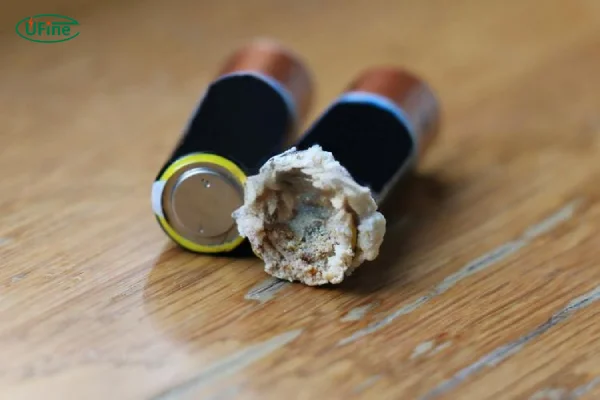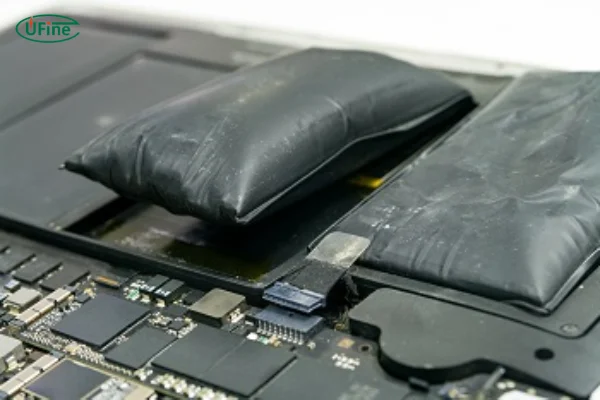Lithium-ion batteries are everywhere. From our smartphones and laptops to electric vehicles and power tools, we rely on them daily. But like all things, they have a lifespan. Over time, or due to improper handling, they can become damaged. Now, you might be wondering, “Can I still charge a damaged lithium-ion battery?” The answer isn’t as straightforward as you might think. In this article, we’ll explore the signs of a damaged battery, the risks involved, and what to do when your battery shows signs of wear and tear. Whether you’re concerned about safety or curious about how to manage a faulty battery, this guide will help you navigate these tricky waters.
Part 1. Signs of a damaged lithium-ion battery

Recognizing a damaged battery early is crucial to preventing further damage or even a safety hazard. So, how do you know if your lithium-ion battery is no longer in good shape?
-
Swelling or Bulging: One of the most noticeable signs is when the battery begins to swell. This happens because of gas buildup inside the battery due to chemical reactions. A swollen battery can cause the device to be hard to close or appear misshapen. Never ignore this symptom, as a swollen battery can be dangerous if handled improperly.
-
Overheating: If your battery feels unusually hot, this could indicate an internal fault. Batteries tend to heat up during regular use, but extreme heat or excessive warmth during charging can signal damage. It’s an issue that should be addressed immediately.
-
Leaking: If you notice any unusual substance leaking from the battery, stop using it immediately. Leaking is a sign of internal damage, and the leaked substance can be toxic or corrosive.
-
Failure to Charge or Hold Charge: A battery that won’t charge or loses its charge too quickly might have internal issues. If your device shows a full charge but dies quickly, or the charging process seems abnormally slow, the battery could be damaged.
-
Visible Physical Damage: Cracks, dents, or punctures on the battery’s surface are clear indicators of damage. These physical imperfections can result from impacts, pressure, or manufacturing defects.
Part 2. Common damage to lithium batteries
Lithium-ion batteries are delicate, and even small issues can lead to more significant problems. Here are some common ways they get damaged:
-
Overcharging: Continuously charging your device beyond its full charge can damage the battery over time. While most modern devices have built-in protection circuits to prevent overcharging, this process can still harm the battery’s health.
-
Deep Discharge: Letting a lithium battery discharge completely (i.e., dropping to 0%) regularly can lead to irreversible damage. Lithium-ion batteries prefer partial discharges to deep ones, so it’s essential to recharge them before they run out of juice.
-
Temperature Extremes: Both high and low temperatures can be harmful. Charging a battery in hot environments or leaving it in freezing conditions can reduce its capacity, shorten its lifespan, and even lead to swelling or leakage. It’s crucial to charge your devices in moderate temperatures.
-
Physical Damage: Dropping, puncturing, or compressing the battery physically can damage its internal structure, leading to short circuits, leaks, or swelling. Always handle batteries carefully.
-
Internal Short Circuits: A short circuit can occur inside the battery when the separator between the positive and negative electrodes gets damaged. This can lead to dangerous heating or even a fire.
Part 3. What are the hazards of damaged lithium-ion batteries?
The hazards of damaged lithium-ion batteries cannot be overstated. A compromised battery can pose serious safety risks. Here’s a breakdown:
-
Fire Risk: Damaged lithium-ion batteries can overheat and catch fire. This is especially dangerous if the battery is charging while damaged. The fire could spread quickly, potentially causing serious injury or property damage.
-
Explosion Risk: In rare cases, severely damaged lithium batteries can explode due to pressure buildup inside the cell. This is more likely if the battery is punctured or exposed to extreme heat.
-
Toxic Leaks: When a battery leaks, the chemicals inside it can be toxic. This could harm your health, especially if you come into contact with the leaked material. Always handle a leaking battery with care.
-
Device Damage: If a lithium-ion battery leaks or swells, it can cause permanent damage to your device. The corrosive materials can ruin the internal components of your phone, laptop, or any other device it powers.
Part 4. Can you charge a damaged lithium battery?
The short answer is: No, it’s not safe to charge a damaged lithium-ion battery. Here’s why:
-
Increased Risk of Fire and Explosion: A damaged battery could cause electrical shorts, overheating, and even fires. Charging a swollen, leaking, or punctured battery is dangerous. You’re essentially playing with fire, and it’s better to be safe than sorry.
-
Irreversible Damage: Charging a damaged battery will likely cause further damage, potentially rendering it completely unusable. For example, a swollen battery can expand further, damaging the device in the process.
-
Decreased Performance: Even if the battery doesn’t immediately catch fire, damaged lithium-ion batteries often struggle to hold a charge, and you’ll notice a sharp drop in performance. Charging them will only result in wasted energy and frustration.
Part 5. How to deal with a damaged lithium-ion battery
When you encounter a damaged lithium-ion battery, your first instinct might be to try and fix it. However, it’s crucial to handle it safely:
-
Do Not Use It: The first thing you should do is stop using the device. If the battery is swollen, leaking, or overheating, power down your device immediately.
-
Dispose of It Properly: Never throw a damaged lithium-ion battery in the trash. The chemicals inside can harm the environment, and improper disposal could result in fires. Find a certified e-waste recycling center or a battery recycling program.
-
Consult Professionals: If you’re unsure about the damage, it’s a good idea to have the battery or device examined by a professional. They can assess the level of damage and advise on safe disposal or potential repair.
Part 6. How to store a damaged lithium-ion battery?
How to Store Lithium Batteries Safely?
If you’re unable to dispose of a damaged battery immediately, you must store it safely:
-
Store in a Cool, Dry Place: Find a safe spot that’s away from extreme heat or cold. The battery should be kept at room temperature, and it’s best to avoid any humid or wet environments.
-
Place in Non-Flammable Container: If you’re storing a swollen or leaking battery, keep it in a non-flammable container (like a metal box). This can prevent any fire hazards.
-
Avoid Short Circuits: Make sure the battery terminals don’t come into contact with metal objects, which could cause short circuits. You can use electrical tape to cover the terminals as an added safety measure.
Part 7. Conclusion
While lithium-ion batteries are efficient and widely used, they can pose significant risks when damaged. Charging a damaged battery is never a good idea. It’s safer to stop using the battery immediately and dispose of it properly. Always prioritize safety to prevent hazardous situations, and if in doubt, consult a professional. A little care and caution will go a long way in keeping you and your devices safe.
If your lithium-ion battery shows any signs of damage, it’s best to err on the side of caution. Don’t attempt to charge it. The risks—fire, explosion, or environmental harm—are just not worth it.
Related Tags:
More Articles

How to Choose the Best Floor Scrubber Battery for Commercial Cleaning?
Selecting the ideal floor scrubber battery ensures a long runtime, rapid charging, and minimal maintenance for efficient commercial cleaning operations.
Battery for Blower vs Battery for Leaf Vacuum: Which One Should You Choose?
Battery for blower vs leaf vacuum—learn the key differences in power, fit, and runtime to choose the right battery for your outdoor tool needs.
How to Choose the Right Battery for Blower?
Choosing the right blower battery? Consider voltage, capacity, chemistry & usage. This guide helps match the best battery for peak performance.
How to Choose the Best Insulated Battery Box for Lithium Batteries?
Choosing the Best Insulated Battery Box for Lithium Batteries? Discover key factors such as size, material, and safety for optimal protection and performance.
7 Critical Elements on a Lithium Battery Shipping Label
What must be on a lithium battery shipping label? Learn 7 key elements to ensure safety, legal compliance, and correct handling across all transport modes.




